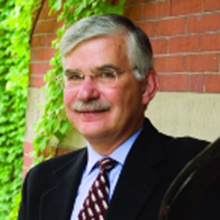Listening Time — 19:29
What made clinician Phoebe Simpson decide to pursue her PhD? It started with her patients, many of whom had "really complex pain problems that I didn't feel equipped to treat," she explains to Editor-in-Chief Alan Jette, PT, PhD, FAPTA. Trained in the traditional biomedical model, she found herself grappling with how to shift her practice to incorporate a biopsychosocial approach.
"How does a physio like me 'upscale' in that way?" She decided to both delve into the data and contribute to the data, and, after being in clinical practice for 5 years, became a researcher investigating physical therapists who were learning and applying a biopsychosocial approach — cognitive functional therapy — as part of a randomized controlled trial. But before she could study "the journey those clinicians go on, … we wanted to see … what was the existing data to show how we should be training or what has been done in training PTs to be able to deliver a psychosocial approach." Jette and Simpson discuss why it's taking so long to incorporate the biopsychosocial approach into physical therapy; the evidence on the "two camps" of training (didactic and experiential) she found in the scoping review; the major problems she noted, including the lack of real patients as part of the training; the lack of reporting guidelines to ensure adequate detail for replication; and challenges with competency and fidelity.
Our guests

Phoebe Simpson, PT, BSc (Hons), was completing her PhD at Curtin University, Perth, Western Australia, at the time of this interview.

Alan M. Jette, PT, PhD, FAPTA, is editor-in-chief of PTJ: Physical Therapy & Rehabilitation Journal.